Warehouse Closes
07 March 2025
Judging
Date
24 & 25 March 2025
Winners Announcement
22 April 2025
07 March 2025
24 & 25 March 2025
22 April 2025
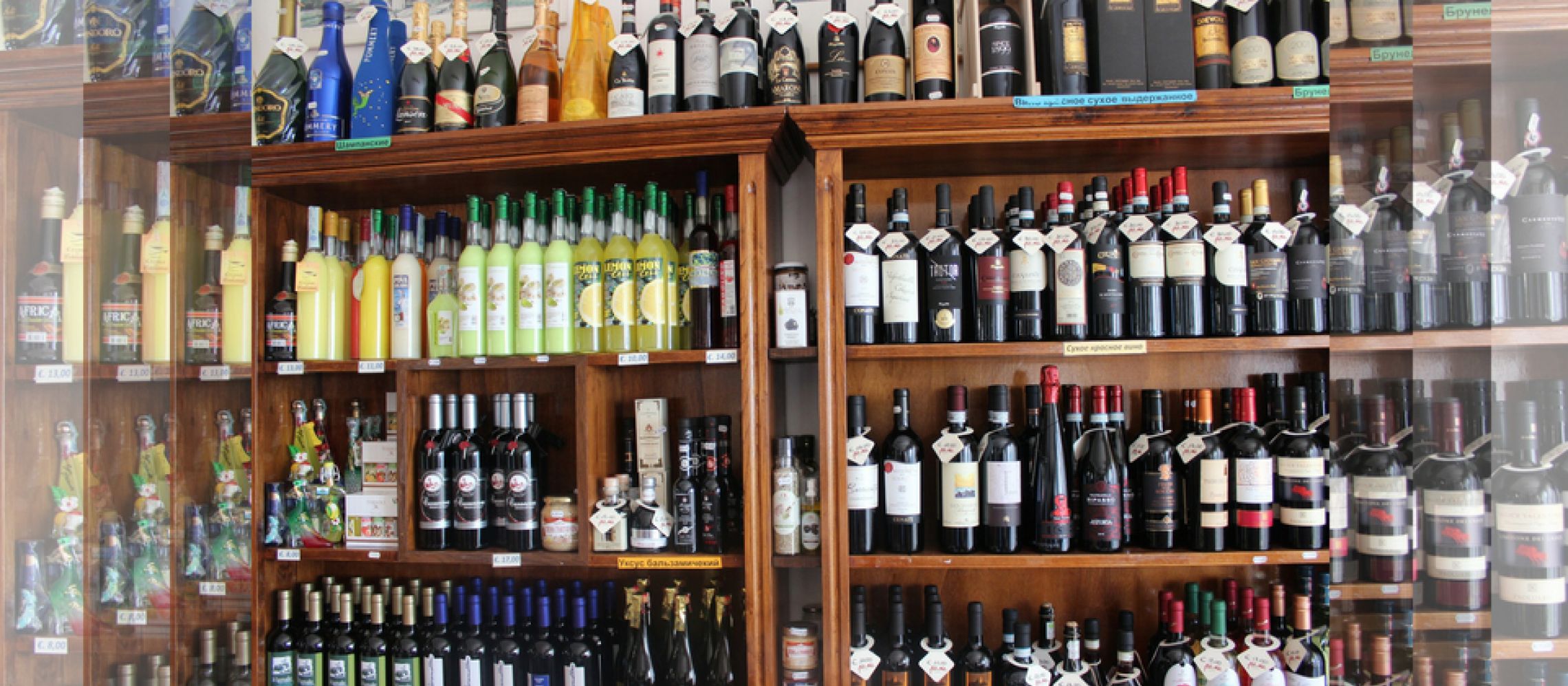
Wine bottles, typically made of glass, are produced in a variety of shapes and volumes. These bottles are not just containers but they construe so many details about the wine that only wine experts might explain. All wine bottles have a specific structure according to the wine they carry. The parts of a wine bottle have a specific meaning. First, let’s see what these parts are called.
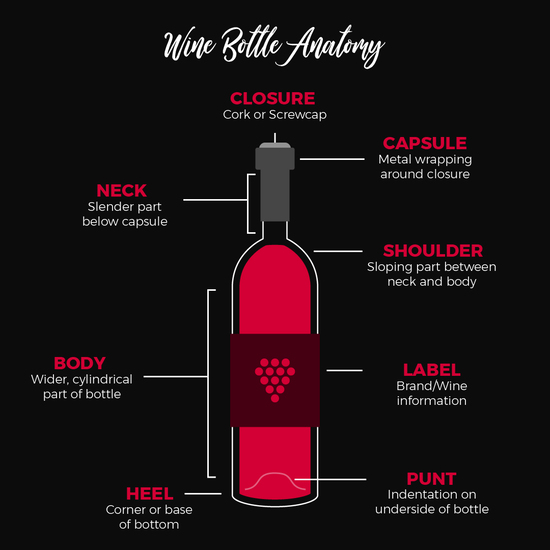
Closures are used to seal wine bottles shut. There are several types of these closures such as Cork closures and Screw Cap.
Cork Closures
These closures let the wine expose to a very small amount of Oxygen. While it allows wine to breathe, there are chances that wine under cork might get affected with cork-stigma/cork-taint due to the chemical Trichloroanisole (TCA). This occurs during the process of winemaking and does not impact on wine’s originality. There are some less-expensive wines that use synthetic corks. The synthetic corks are made from plastic or rubber; hence they are cheaper than the other type of cork.
Screw Caps
Like synthetic cork, a screw cap is a cost-effective alternative for wineries. It is not necessary that wines under screw caps are always cheap. Some of these types of caps allow wine to breathe as they mature. Unlike cork closures, the wine under screwcap will not be affected by cork-taint.
A metal wrapping around the closure is called Capsule. It holds cork tightly preventing the wine from drying up or evaporating too quickly.
Neck, below the closure, is a delicate part of the bottle which is used as a grip to hold it. The perfect level of wine is when it reaches to the neck. If the wine-level is lower than bottle’s neck, either the wine has leaked out or evaporated through the cork during the ageing period.
The shoulder is the slopping part after neck. There are standard descriptors of shoulder levels, high shoulder, mid shoulder and low shoulder level. Shoulders are not same in all bottles. Some bottles do not have clear shoulders (i.e. Burgundy, Alsace) while some of them have more conspicuous shoulders.
Body is the main part of a bottle. It is usually cylindrical but its diameter can vary.
A sticker on the body is a label where you can find information about wine like a volume of the liquid, alcohol content by volume, vintage, origin, varietal, etc.
It is an indentation on the underside of the bottle given while forming the bottle during the moulding process. This helps in strengthening the structure of a bottle.
The heel is the bottom part of a bottle that helps the bottle to stand straight.
The physical shape of all wine bottles varies from one another based on the type of wine it contains. Some bottles are long, some are short. There are 12 types of wine bottles with different shapes.
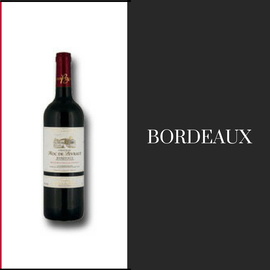
Bordeaux bottles have a tall and straight structure with high shoulders. If the bottle is for red wine, a dark green coloured glass will be used in the bottle and if it is for white wine, a light green coloured glass will be used. The Bordeaux bottle is used for a variety of grapes like Cabernet Sauvignon, Merlot, Malbec, Sauvignon Blanc, Chenin Blanc and Bordeaux blends.
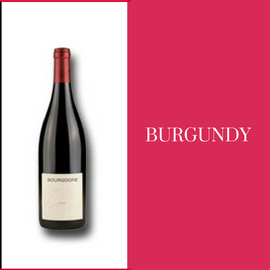
With gently sloping shoulders and a little wider body, the Burgundy bottle is classic and elegant in look. A green coloured glass is used for both red and white wines. This bottle is generally used for Pinot Noir, Aligote and Chardonnay. Burgundy is more popular than other bottles, therefore it is often stylized. Designers often make it with thicker glass, frequently used for Pinot Noir.
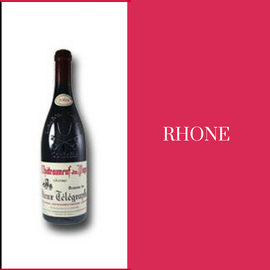
Rhone bottle is almost similar to Burgundy in look. But it is a bit thinner and taller than Burgundy bottle. This bottle has a longer neck, often embossed with a coat of arms, and more angular sloping shoulders. This style is generally used for Mourvedre, Grenache and Syrah. A green coloured glass is used for red wines, while white and rose wines use clear glass.
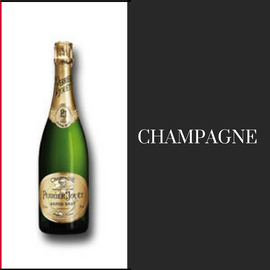
This olive-green bottle is full of joy and happiness and always present at the parties. It is sturdy, still graceful. It has thick glass, gentle sloping shoulders and deep punt. Champagne’s pressure can get as high as 80 to 90 psi. In the early days, these bottles used to explode during transportation. Therefore, they are designed keeping technical necessities in mind.
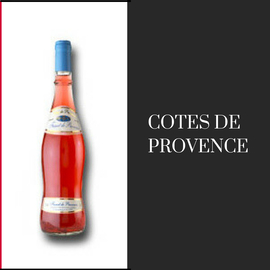
This clear glass bottle is typically used for rose and red wines. There are still some remains of traditional winemaking in Cotes de Provence, some producers still use regional wine bottles. This bottle is also called ‘corset’ by the locals. It has been used for decades and there are no chances of it going away anytime soon.
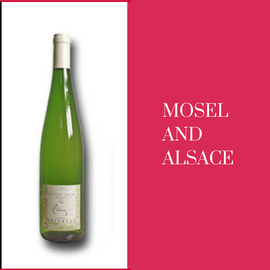
Mosel and Alsace bottle is tall and slim with a long neck. Typically, wines from Mosel (Germany) and Alsace (France) use this bottle. Wineries that use grape varieties such as Riesling and Muller Thurgau use this bottle. The New World winemakers use this bottle for sweet wines.
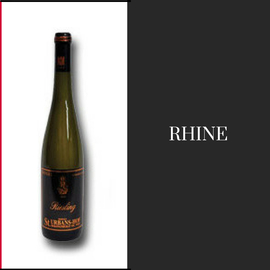
The Rhine is also a tall and slim bottle with a long neck. It has quite a little punt. A dark brown coloured glass is used for this bottle which sets it apart from other bottles. This German bottle is used for grape varieties like Riesling, Muller-Thurgau and Bacchus.

Chianti bottle has round body, bulged bottom covered with a straw basket. This bottle is also known as the fiasco. The basket around the bottom provides a flat base for the glass and extra protection during transportation and handling. The use of this bottle has been decreased over years; most Chianti wine is now bottled in more standard bottles like Bordeaux.
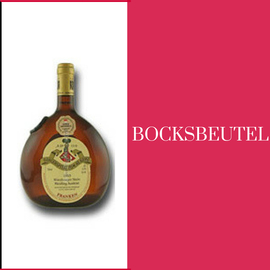
Bocksbeutel translates to “beer bag” but it is used for wine. It comes in the form of a flattened ellipsoid and it contains the same volume of wine as other bottles (0.75 Liters). It has a short neck which often features an embossed badge on the left shoulder. This badge usually represents the name of its domain. This bottle is manufactured with a flattened shape for a purpose – to carry it around easily and keep it from rolling away on the uneven ground.
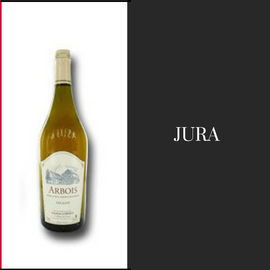
Jura has less recognition and popularity. It is made from light green coloured glass. The top half has inside curved shoulders while the bottom half is a little flared. The shoulders gently blend into its long neck. Grape varieties including Savagnin, Poulsard, Trousseau, Pinot Noir and Chardonnay use this bottle.
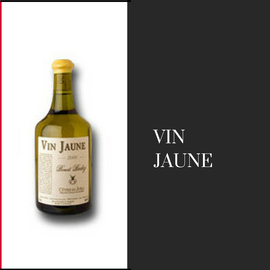
Vin Jaune has a highly unconventional shape. The bottle is short, stocky and heavy built, legally authorized for Vin Jaune wine only.
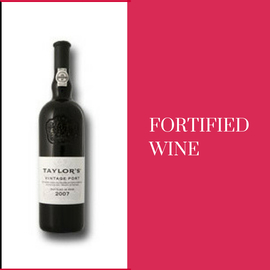
This bottle is slightly similar to Bordeaux bottle. It has a straight body with high, rounded shoulders. The neck has bulges which prevent debris from being poured into the glass. Its dark black glass protects wine from light. This bottle is used for Fortified wines such as Vermouth, Port, Marsala and Madeira.
Apart from these 12 bottles, some other types and shapes of bottles are also used by winemakers to attract and boost sales. Only Burgundy, Germanic and Bordeaux bottles are most commonly used around the world.
Let’s check bottles’ names according to their size.
| Name | Size | Additional |
|---|---|---|
| Split | 187 ml | Quarter of a standard size bottle |
| Half-bottle | 375 ml | Released for higher priced wines |
| Standard size | 750 ml | Recognized throughout the world |
| Magnum | 1.5 L | Equal to two standard-sized bottles |
| Double Magnum | 3 L | Equal to two Magnum bottles |
| Jeroboam | 4.5 L | Equal to six standard-sized bottles |
| Imperial Magnum | 6 L | Equal to eight standard-sized bottles, holds 6000 ml. |
| Salmanazar | 9 L | Equal to twelve standard-sized bottles, holds 9000 ml. |
| Balthazar | 12 L | Equal to sixteen standard-sized bottles, holds 12000 ml. |
| Nebuchadnezzar | 15 L | Equal to twenty standard-sized bottles, holds 15000 ml. |
The standard size of the bottle is 750.00 ml in which almost all wines are sold. The large commercial brands of inexpensive wines use Magnum or other large-format bottles.
So, this was a complete guide for wine bottles and their anatomy. We will come back with similar topics soon, so stay tuned!
Warehouse Closes For Samples On March 7, 2025. Ship Your Samples Now. View Shipping Instructions Here.